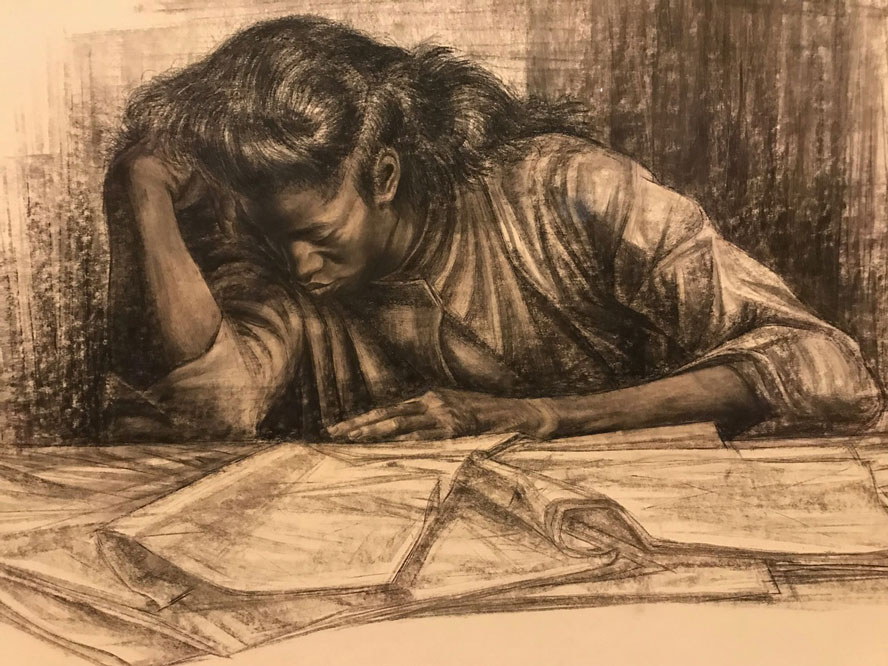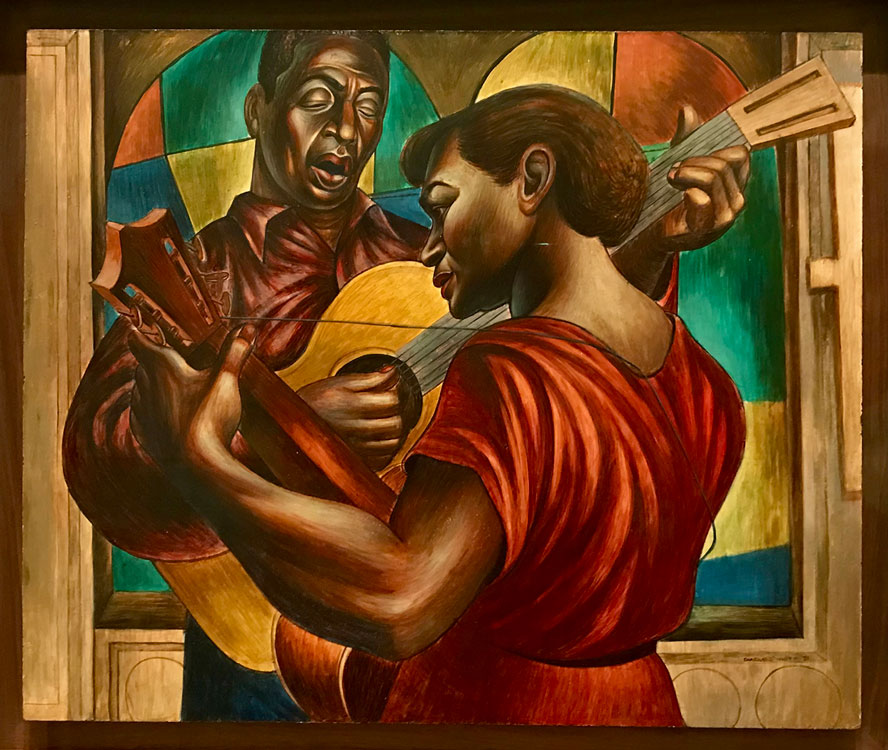Charles White: An Illustrious Legacy
By Val Zavala
Charles White, one of America’s most important artists, first lived Altadena in 1959 on Kent Street and later moved to the Meadows neighborhood. White (1918 – 1979) “dedicated his life and work to conveying the concerns, sentiments and beauty of African Americans … always with the dignity they so rightly deserved but were so often denied.” His work includes images of famous African American leaders as well as everyday people like preachers, mothers, musicians and sharecroppers.
His talent developed during his childhood in Chicago. His mother, a domestic worker dropped him at a library or art gallery while she worked. In seventh grade he received a scholarship to attend the Art Institute of Chicago on Saturdays where he developed his natural talents.
Later he won several art scholarships, but they were rescinded when the donors realized he was Black. Finally in 1937 he enrolled in the Art Institute of Chicago on a scholarship.
His career began with the Works Progress Administration, which hired artists during the depression to chronicle the American people in various media. For his first public piece he created a large canvas called “Five Great American Negroes.” In vibrant colors it depicts Sojourner Truth, Booker T. Washington, Frederick Douglass, Marian Anderson, and George Washington Carver.
Among the very few white people he depicted in his entire oeuvre were Abraham Lincoln and John Brown.
During WWII he served in the army in a segregated division but was discharged because of pre-existing health problems. Teaching positions took him to New Orleans and New York. It was, however, tuberculosis that brought him to Los Angele, where he settled down with his second wife and two children.
The Norman Rockwell Museum writes: “Although Los Angeles was not located near the hub of the Civil Rights movement, through his work he continued to comment on the violence and heroism of those who stood up against racism and discrimination. His work magnified the power of black figures through both scale and form, and his career flourished as he pushed at his own boundaries of which medium to use while also continuing to engage with the Civil Rights movement and the fight for equality.”
In the 60’s he was represented by the Heritage Gallery and his work was exhibited more frequently abroad and across the United States. In 1965 he accepted a job teaching at Otis Art Institute, eventually becoming chair of the Drawing Department. In his 14 years at Otis he influenced a younger generation of artists.

To this day White is revered by LA area artists including Richard Wyatt, Kerry James Marshall, Kent Twitchell, Timothy Washington, David Hammons and Judith Hernandez.
White’s final major artwork was completed in 1978, a mural called Dr. Mary McLeod Bethune–Last Will and Testament at the Mary McLeod Bethune Public Library in Exposition Park in Los Angeles. White’s art can also be seen at the National Gallery of Art, The Metropolitan Museum of Art and the Los Angeles County Museum of Art among others.
Charles White died of congestive heart failure in 1979 at 61. On October 25, 1980 the park near Fair Oaks Avenue and Mountain View Street was named after him. His son, Ian White, lives in Altadena in the Meadows.

